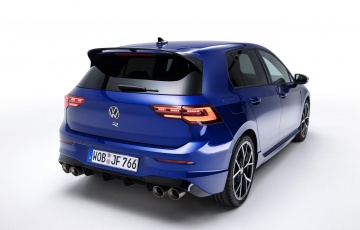The inventor of the dune buggy has passed away
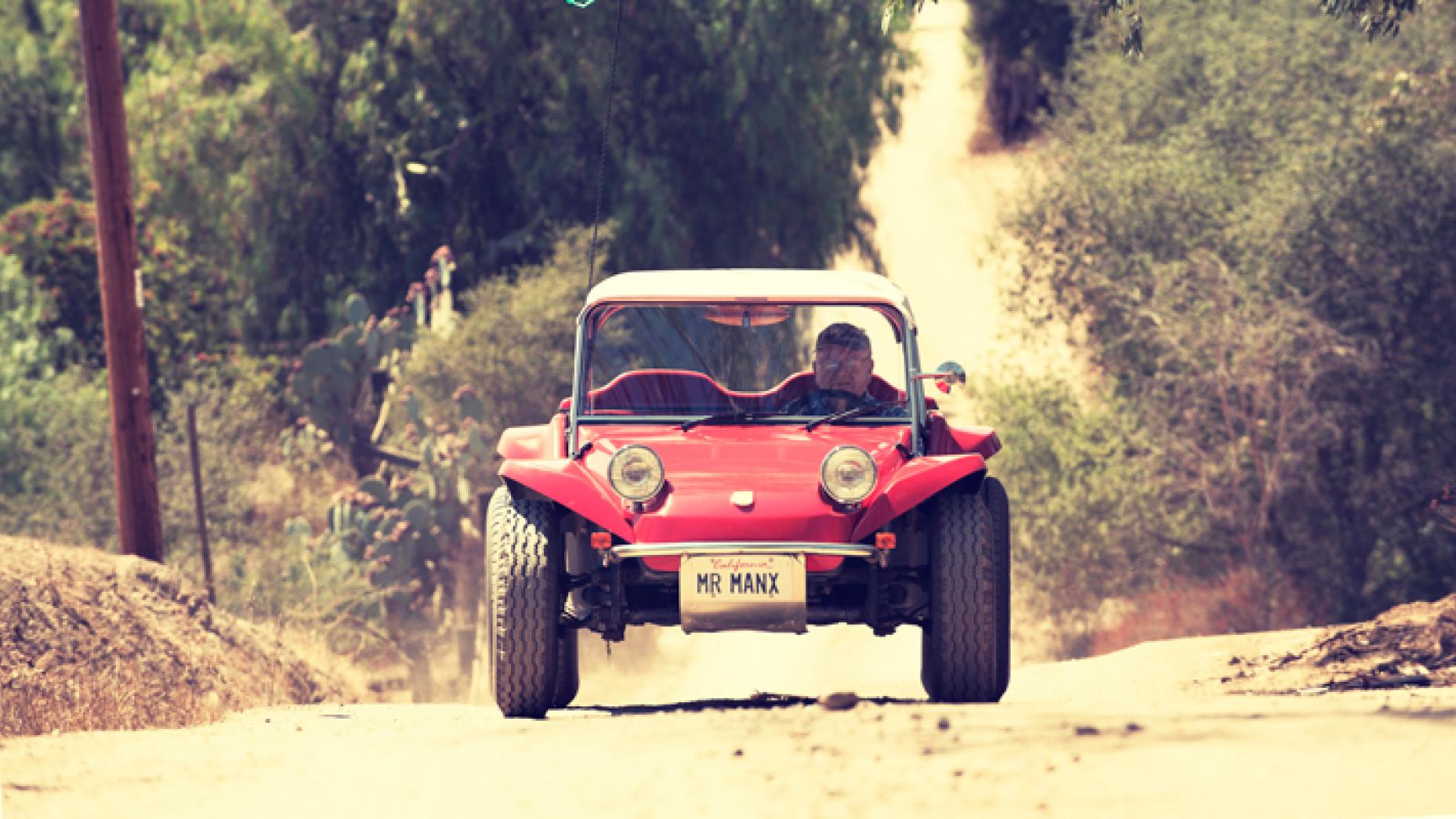
This feature was originally published in the December 2013 issue of Top Gear magazine
“I’m not smart, but I’m talented. I can draw, I have a good sense of proportions, I know a lot about fibreglass, and I’m a horny old ******. I’ve raced at Bonneville, shaped surfboards, and I’ve never had a business plan. The whole of that - the whole of me - is in the Manx buggy.”
Bruce Meyers is 87, and in 2014 the Meyers Manx will celebrate its 50th birthday. A car that became a bandwagon, defined the Californian beach culture it grew from, fathered the Baja 1000 and wheel-to-wheel off-road racing, exploited one of VW’s most celebrated innovations, and intercepted the chain letter of play-it-safe received automotive aesthetics. It’s been copied more than 300,000 times, all over the world, and it owes its creator a fortune. Literally.
It’s also utterly, indecently cute. “When I was a little kid in Newport Beach - before the buggies and the cars and the beach boy life - I crawled around with comics,” says Meyers, insouciant to the fiercely colourful, baked-on charm of his home and workshop in Valley Center, near San Diego. “Mickey Mouse drove around in these tiny cars with great big wheels. I wanted to drive them right off the page. I never thought I would, but I kind of had an idea that cars would be part of my life.”
Words: Matthew Jones
Photography: Robert Yager
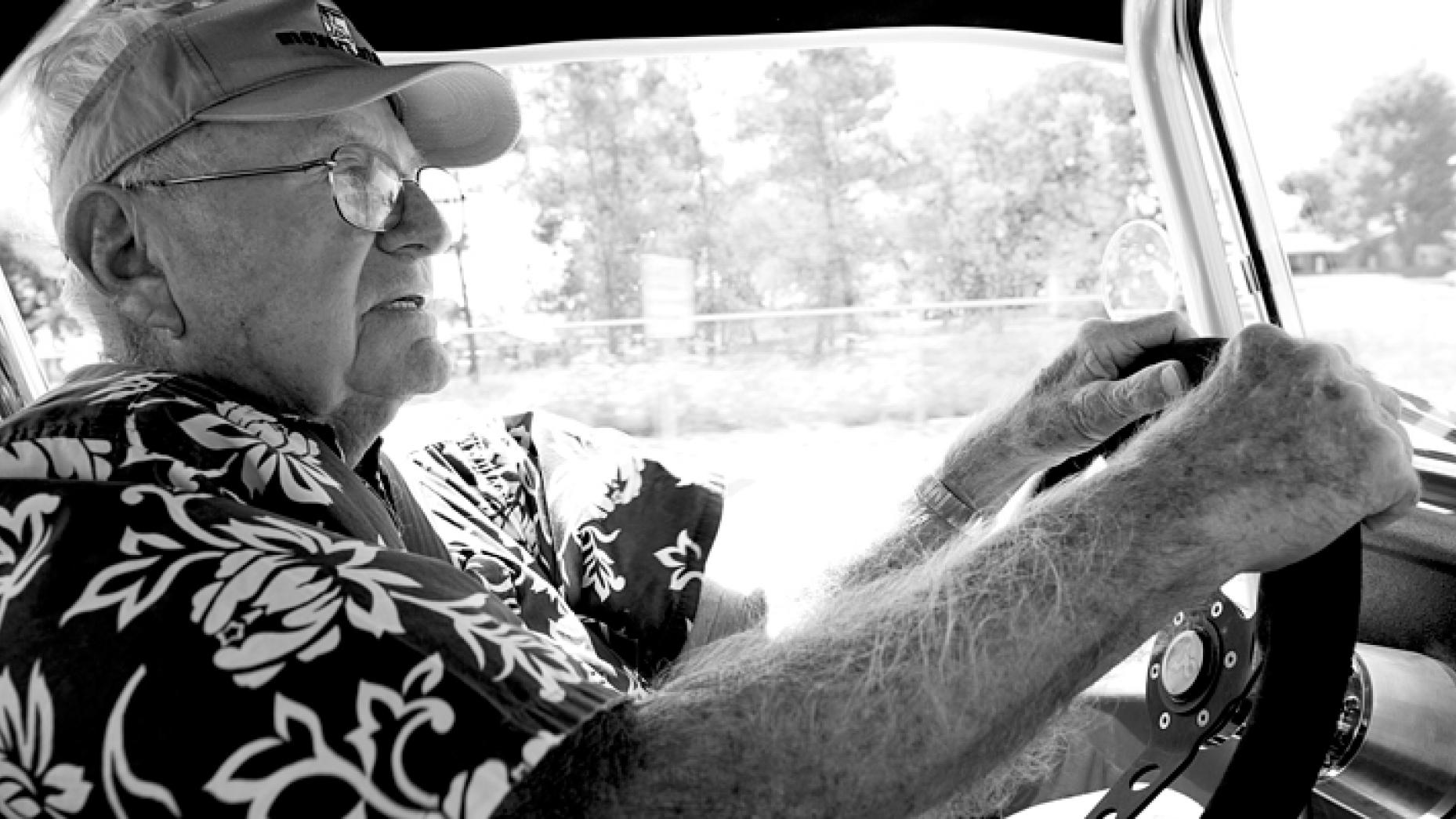
Which isn’t terribly surprising. His father raced at Indianapolis in 1906, 1907 and 1908, and was one of three men that convinced Henry Ford - the Henry Ford - to set up a dealership network. “I guess it’s why I used to like Fords; back then, I just assumed you were a square if you drove anything else. But when the Depression came, our family Fords - and the Buicks and Lincolns - all went. Then in 1944, I got drafted.
“The Navy was tough. When I was stationed off the coast of Okinawa, I had to jump off an aircraft carrier when it caught fire after a kamikaze attack [killing 389]. After that, I kind of left cars alone for a while, and had a few years to myself.” Meyers left for the South Seas, setting up a trading post on a coral atoll, then sailed off to Tahiti where he lived under the Polynesian sun in a tatty old tin shack.
“As soon as I got back to the US, I was thinking about sailing south again. I’d done some work with fibreglass as a surfboard-shaper and boat-builder by then, so I started work on a 42-foot catamaran. While I was putting it together I’d surf, smoke a little grass, go to art school, race a ‘32 Highboy Ford at the [Bonneville] lake beds, chase pretty girls and hang out in Pismo beach, watching the water pumpers [named after their water-cooled engines] - the first dune buggies.
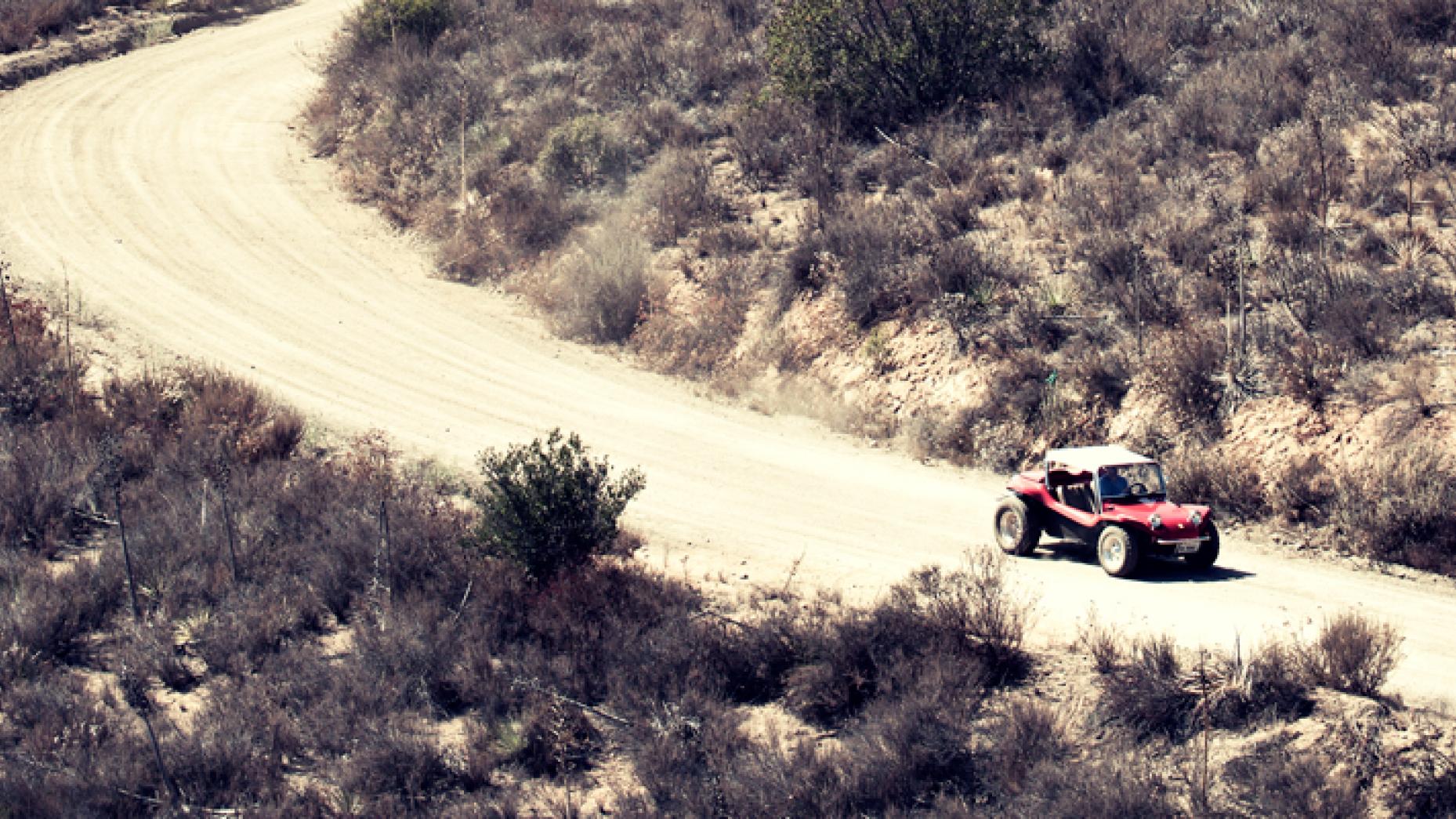
“They had a motor and transmission mounted right up to the rear axle. At the end of each axle, they had two, sometimes three wheels welded together, and the frame rails went out 20 feet to the fronts. They spat flames and were a lot of fun, but I knew they were inefficient.
“Then I saw someone driving a Beetle floorpan. It skimmed around like a mosquito across water, even with 35bhp and four-inch tyres. All the weight over the rear end made a lot of sense in the desert. It was why the Mexicans drove around with 50-gallon drums of water in the back of their pickups - the driven wheels got the best chance of traction, because they’re getting pushed down and onto the loose surface.
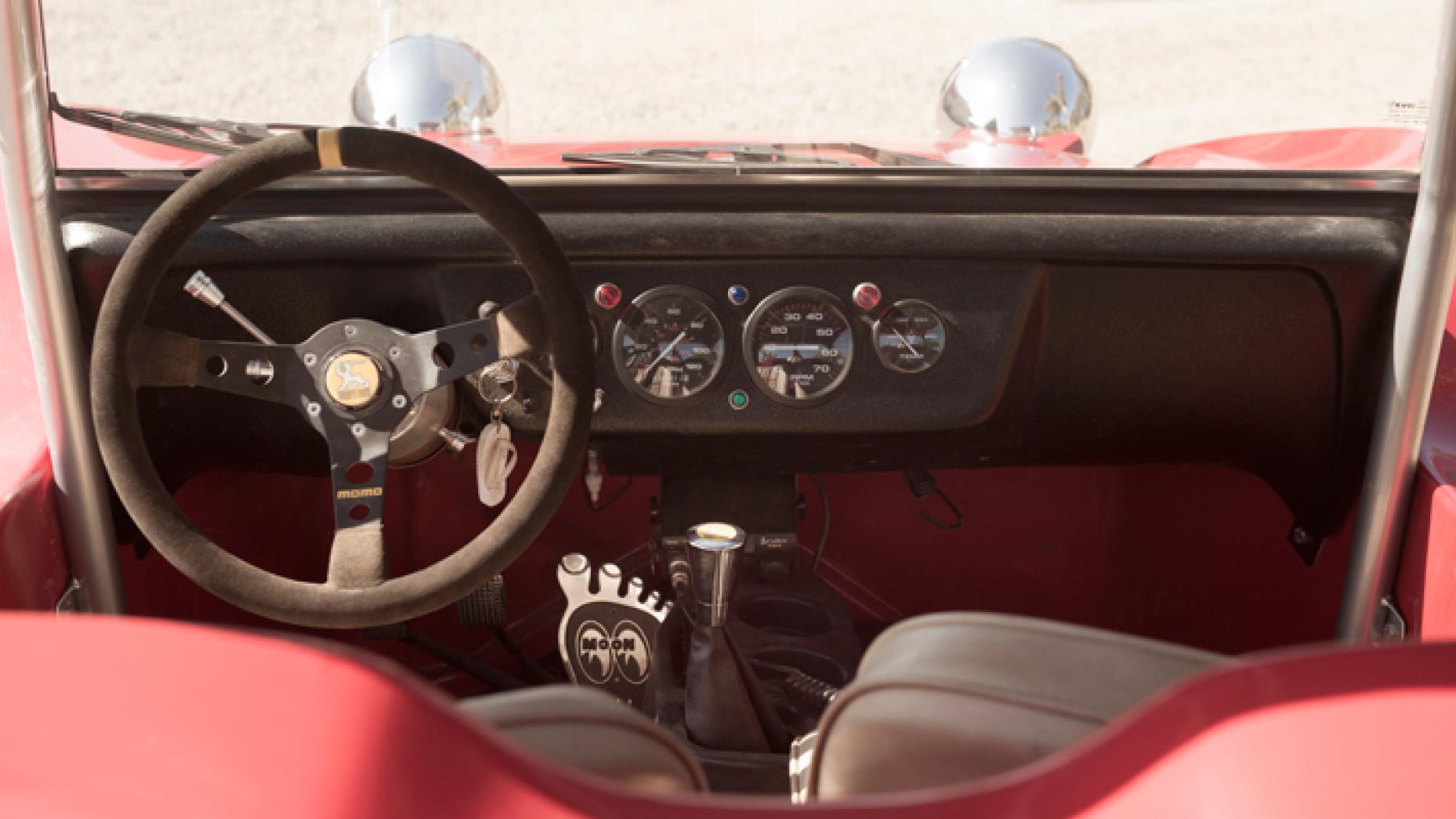
“But there was another element. VW trailing arm suspension.” Meyers holds his left hand out in front of him, palm down, and dangles his index finger. Then he starts hitting it towards himself with his other hand. Technicolor eyebrow movements suggest I should do the same. “See? Doesn’t hurt. Try and hit that finger upwards. It’ll hurt.”
I do. I bet you are too. It does. “That’s how trailing arm suspension works - that’s why these things skip across the dirt. And the whole VW set-up - engine, mechanicals - got me thinking. I could build something really innovative. But I had no idea it’d be responsible for the Baja 1000…”
Bruce wasn’t the only one. In 1960, LA-based Volkswagen dealership and tuning parts supplier, EMPI, offered a metal kit called the Sportster. It cost around $500, and was designed as a kit to bolt directly to a shortened VW floorpan and mechanicals.
In theory, perfect. Find a scrap Beetle, throw away the body, shorten the chassis, then drop a lighter shell on top. A long weekend’s work, then point its lantern jaw to the sand, and low-draw salvation. But there was a problem. The bodywork was an angular, unbent festival of straight lines, and fantastically ugly.
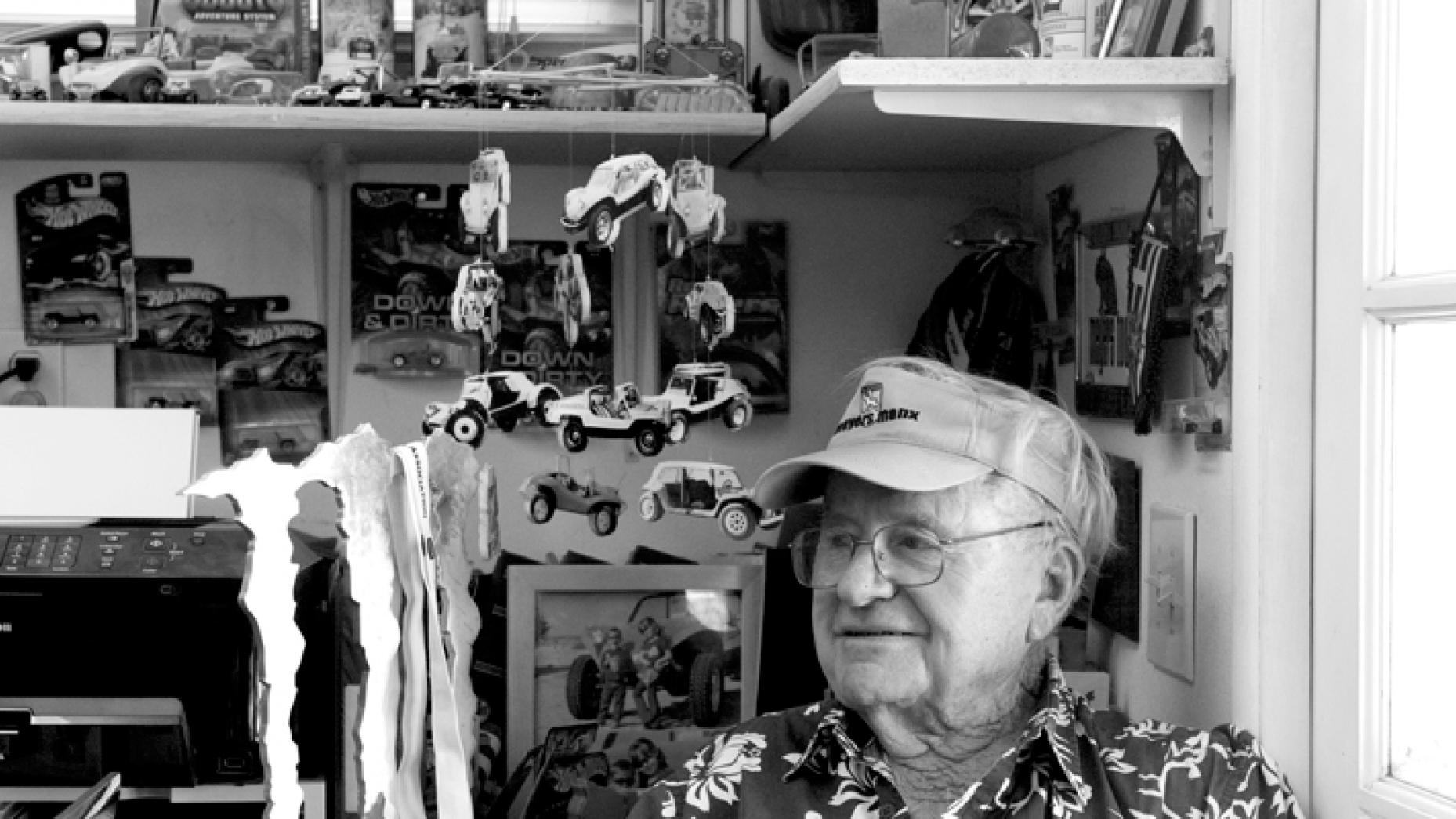
“I’m an artist and I wanted to bring a sense of movement and gesture to the Manx. Dune buggies have a message: fun. They’re playful to drive and should look like it. Nothing did at the time. So I looked at it and took care of the knowns. The top of the front fenders had to be flat to hold a couple of beers, the sides had to come up high enough to keep the mud and sand out of your eyes, it had to be compatible with Beetle mechanicals and you had to be able to build it yourself. Then I added all the line and feminine form and Mickey Mouse adventure I could.
“I called the first cars - the 1964 cars - the monocoques. I built 12 of them and they were all fibreglass, no floorpan, with Beetle engines and suspension bolted on. I hadn’t learned to trust the material yet. In Old Red - car #1 - I carried mats, skins and resin [to repair it] because I thought I’d be left on my ass when it snapped on the street.
“But it was a tough little car, and I got more confident with it. I took it to the dunes, jumped it, and gave that thing a pounding. Then, the same year, I was up at Big Bear Lake with my buddy Ted Mangels, arguing with some bike guys and I decided that I wanted to beat them at a race - they were saying bikes were best, I was saying the buggy was best. So we set up a competition to see who could get from Tijuana to La Paz fastest - about 832 miles off-road.
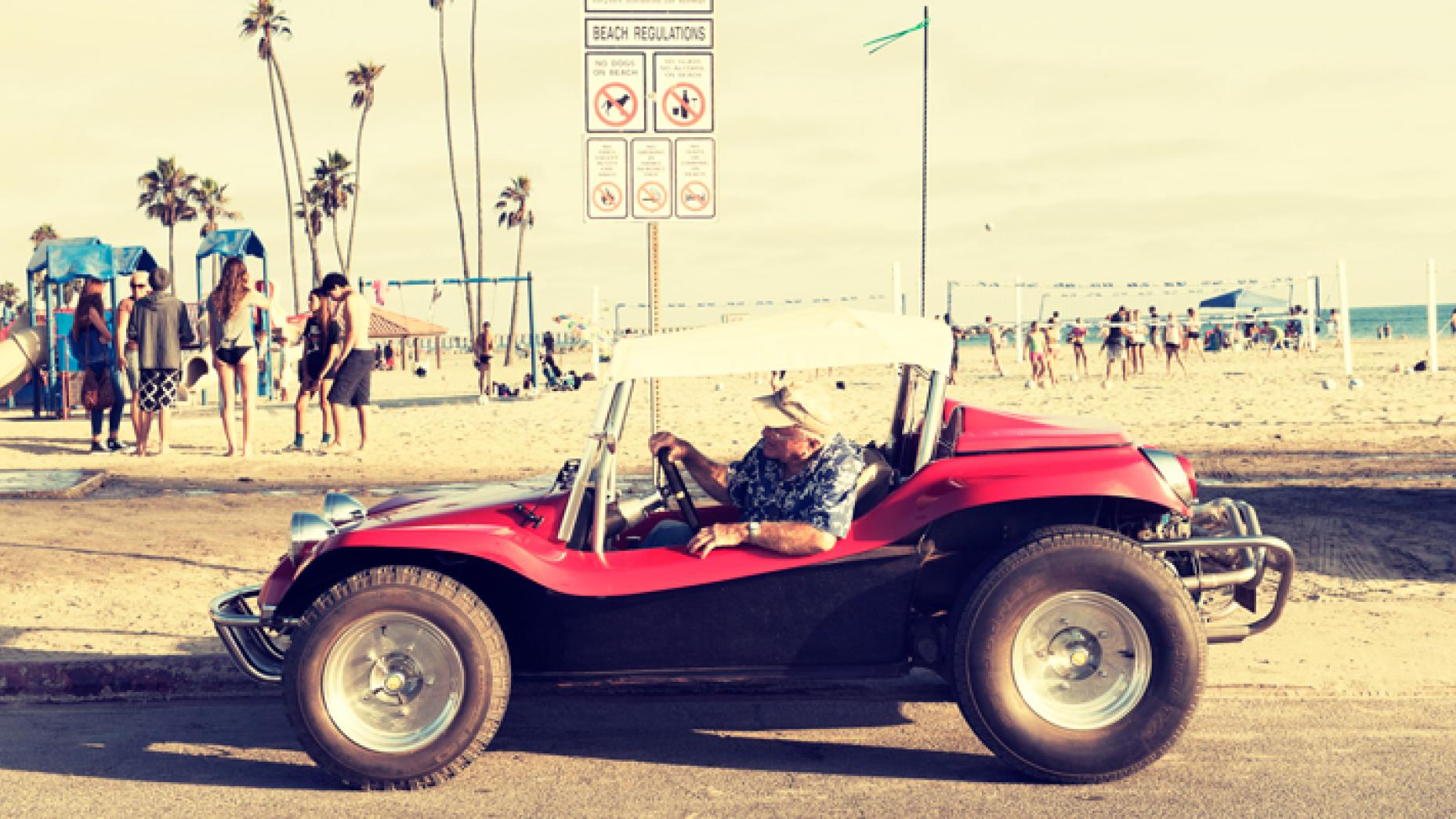
“To be honest, I didn’t really think we could do it - it was just bravado and bull. But then Ted turned up at my house with maps rolled up under his arms and we crawled around on the floor calculating average speeds and fuel stops. We worked out that we could do it in about 30 hours - the bike guys were doing it in 40, so we had a shot.”
“I didn’t want to lose, so we carried extra gas. We guessed that 65 gallons ought to do it, so carried 40 outside - 25 in three old oxygen bottles strapped to the buggy and the rest in the tank. We had another 25 gallons between our legs in milk bottles. It was dumb, but at the time we thought ‘F**k it.’ We did it in 34 hours 45 minutes, beating the bike guys by over five hours.
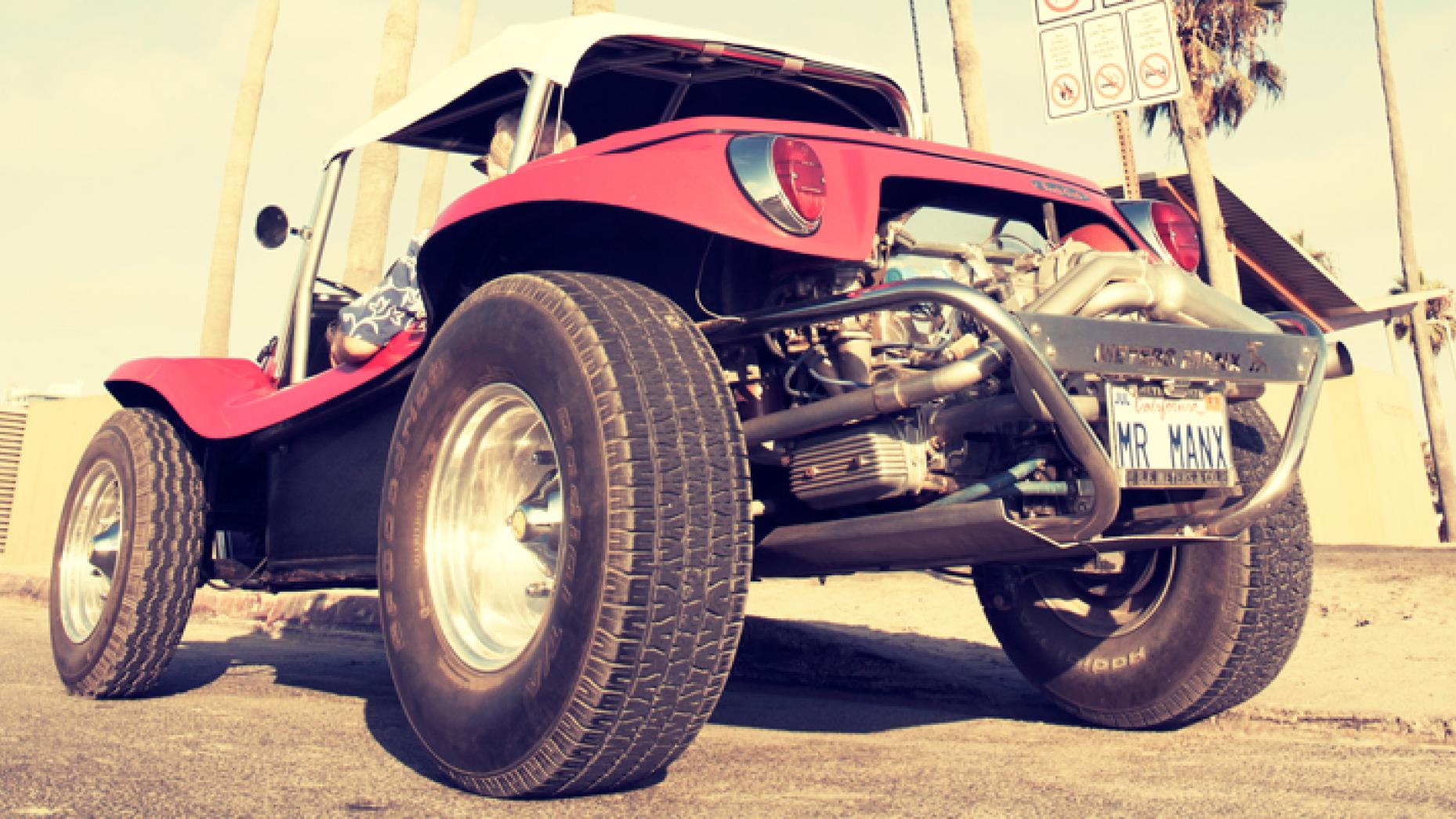
“When I got home, my wife at the time, who worked in advertising at a car magazine, decided to tell the world. I’d hoped to sell a few kits just to cover costs, but she thought it was worth more than that. She wrote to 100 editors, and when the story hit the news stand three days later, the phone rang off the hook. I had 350 orders overnight. I even turned down the guy that owned EMPI [Joe Vittone], who wanted to partner up.
“I didn’t know it, but Old Red and I had started off-road racing. So many bikers and drivers wanted to take part, it triggered Ed Pearlman to start the National Off-Road Racing Association, so it became the Mexican 1000 in 1967, with its own sanctioning body. That year, a Meyers Manx came in first overall and another was second in its class. Eventually, my little bet with some bikers turned into the Baja 1000.”
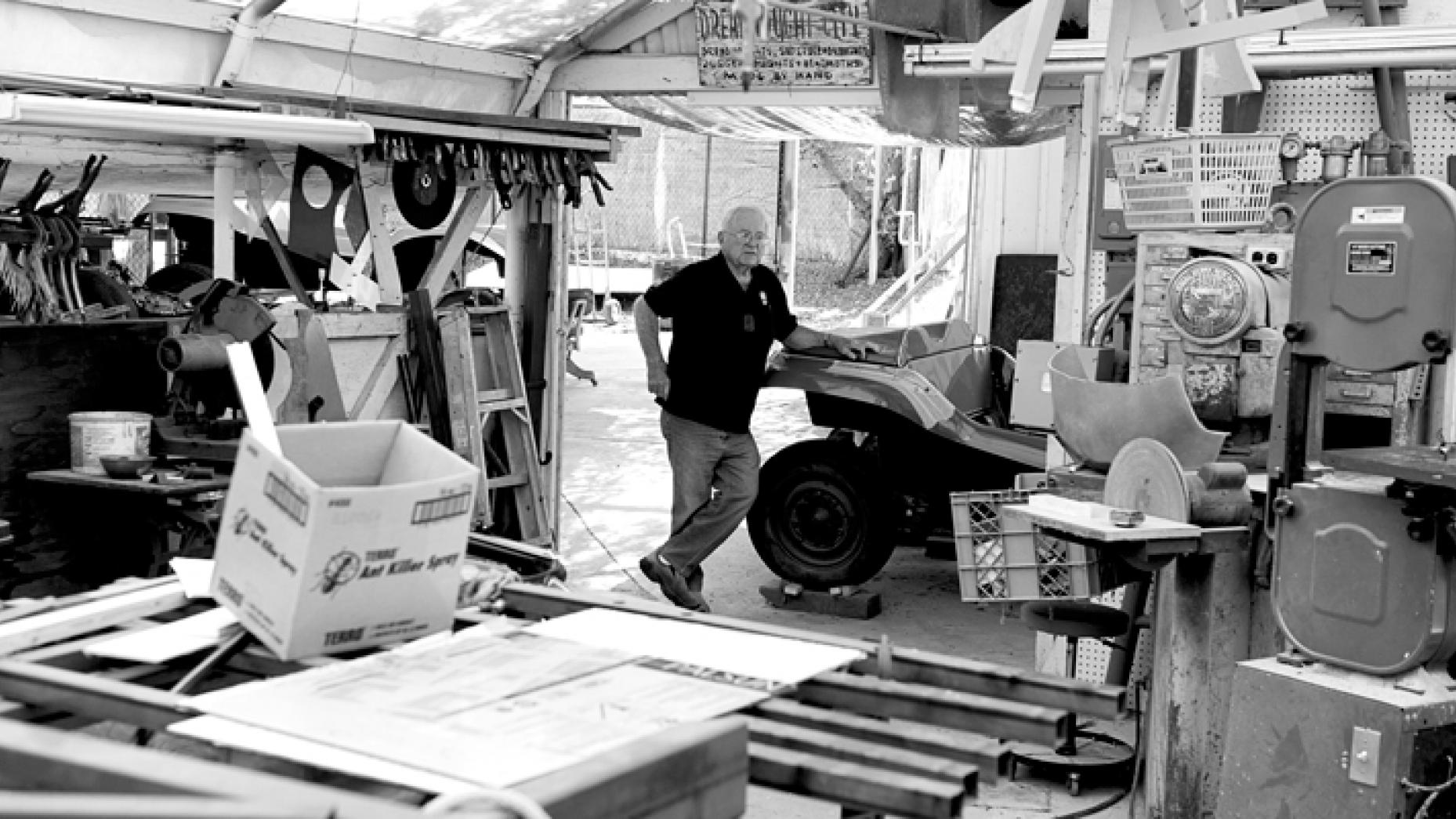
Wound with Californian beach culture, Bruce’s Manx was the filament in the lightbulb whose warm, bright idea lit up the post-war, mangles-and-Spam world. And if you couldn’t have Venice Beach, you could have the buggy. But its success was overwhelming. Then Bruce had a near-fatal crash during the second Baja 1000, and his injuries meant he fell behind fulfilling orders. He redesigned the Manx to wear a full VW floorpan [like the red car pictured], which cut down his workload, but he was still struggling to meet demand. Then he noticed something. His design was everywhere, and in places he resolutely hadn’t left it.
“It was easy enough to copy. You just take a mould of the fibreglass shell, then pop out your own. I even had a patent from 1965, and in 1969 sued a company for copyright infringement.” The judge ruled against Manx, claiming the Manx had been in public use for a year before he was awarded his patent. “I could have appealed, but I’d sunk $30,000 into the case already, and the other guy had a much meaner lawyer.
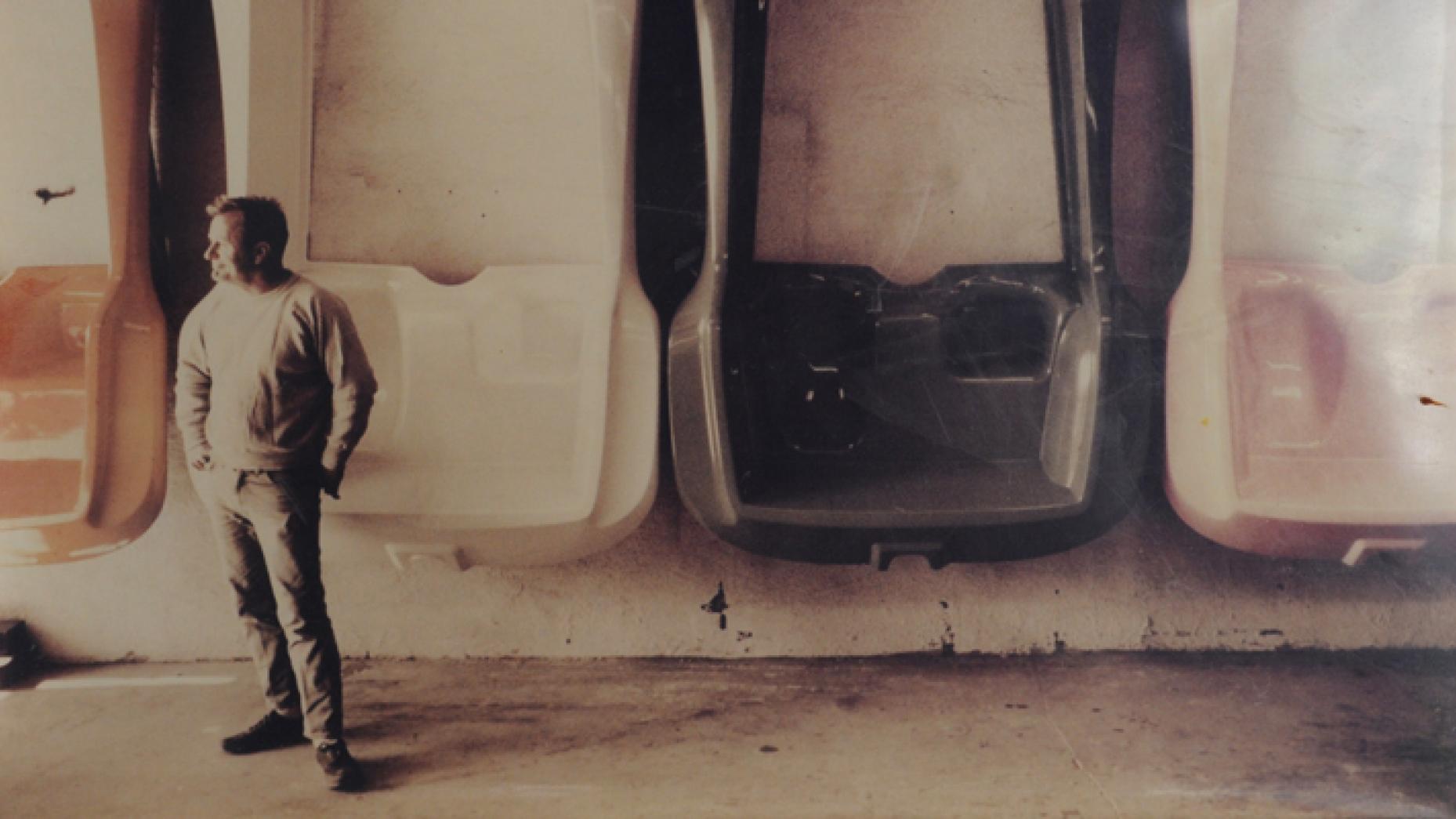
“In total, the Manx was copied about 300,000 times, all over the world - France, Belgium, England, Australia. In ‘94, I went to a dune buggy festival in Le Mans and led a procession of 1,100 cars around the track, and I was driving the only genuine Meyers there. But a lot of people - including me - got caught up because I lost a lot of money. I know I made some bad decisions, and for a while I couldn’t even hear the word dune buggy. But I got bored of myself pissing and moaning, so I started a club.
“A car club usually means you’re around people that have bought cars, but for us they’re people that built a car. You see cars that were built with Dad. And in some cases, the Dad’s gone, but the car’s still here. That’s more important than money. It’s why you can still buy these cars today. People have a deeper connection with a dune buggy, and that gives them a bigger smile than any other car can. That’s what makes me happy. It’s a great contribution to make.”
STORY Matt Jones






